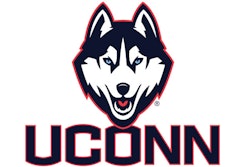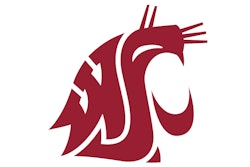
The smell of freshly cut grass, a hallmark of many young athletes’ memories on the field, is back at the University of North Carolina – Chapel Hill. In 15 years, Casey Carrick, assistant athletic director of facilities and turf management, has witnessed Kenan Stadium, home to Tarheel football, transition from natural grass to turf and back again.
After experiencing the installation, management and play of both surfaces, Carrick can confidently say, “I’m a grass person.”
The Tarheels returned to a natural grass field this year courtesy of Carolina Green, a company that grows grass year-round for NFL and college stadiums. The previous turf field was entering its sixth season, and according to Carrick, was just about at the end of its life. “If we wanted to make a change, now was the time to do it,” he says.
The timing also aligned with the addition of UNC’s new head coach, Bill Belichick. Says Carrick, “This coaching staff, obviously, with their background, and the years of football that they’ve done, they preferred a natural grass surface.”
Carolina Green installed 6,700 square feet of sod for the playing surface and 36,000 square feet of synthetic turf on the perimeter.
“The playing surface and at least 6 feet — 12 in some places — out of bounds are natural grass. Everywhere else, from the media line to the stands, is synthetic,” Carrick explains. “It allows the game to be played on natural grass, but the big wear-and-tear areas, like coaches’ boxes, where all the players and the cheerleaders are, and where all the fans are on the sidelines, that is synthetic. We also have two natural grass kicking areas on the sideline for the kickers so they can warm up on natural grass like they will be when they go on the field.”
There is a detailed maintenance and fertilizing plan in place for Kenan Stadium. Carrick and Ryan Anderson, director of athletic grounds, will overseed with ryegrass this fall and rely on reclaimed water to irrigate the field.
“We’re at the point that we are dialing it in and getting ready for football,” says Carrick. “There’s a whole bunch of things that go into it. It’s not just turning on the water and mowing the grass. There’s a lot of stuff happening underneath the soil.”
UNC’s reclaimed water program is one of the key maintenance strategies keeping the natural grass field at Kenan Stadium lush and green. Carrick says the reclaimed water is environmentally friendly, and it allows the Tarheels to maintain their athletics fields without taking water away from the community. The reclaimed water program uses treated wastewater, purchased from OWASA and processed at the Mason Farm Wastewater Treatment Plant. Much of that wastewater comes directly from campus facilities, and other innovative water-gathering tactics — such as stormwater cisterns, green roofs and permeable pavement — round out UNC’s innovative water sourcing plan. UNC was one of the first universities in the country to use exclusively reclaimed water to irrigate its athletic fields when the infrastructure was approved and created over 20 years ago.
“We have the resources to maintain this at a high level. We have the staff to maintain it, and if you don’t have that, it’s hard to do,” says Carrick. “I think for other athletic directors weighing their options, the first thing to look at is: do I have the staff to maintain it? If you don’t, that is the first step.”
The care and keeping of a natural grass field isn’t for everyone. All other Atlantic Coast Conference football teams currently play on synthetic turf. Among the NCAA’s 133 Division I programs, only 39 maintain natural grass fields.
“We’re excited to have it back to grass, and we built it state-of-the-art,” Carrick says. “Everything out here is new and the latest technology. We’re excited to showcase that.”






































